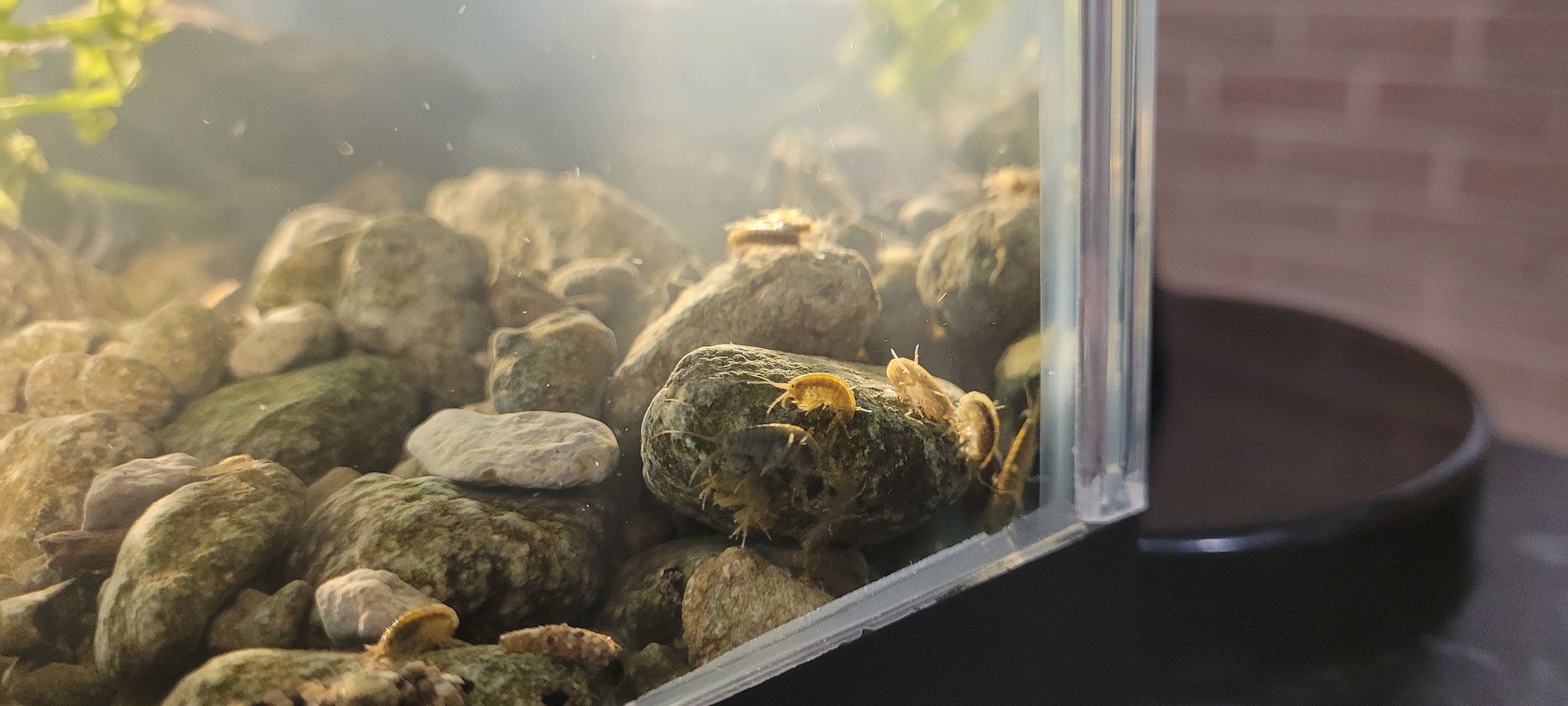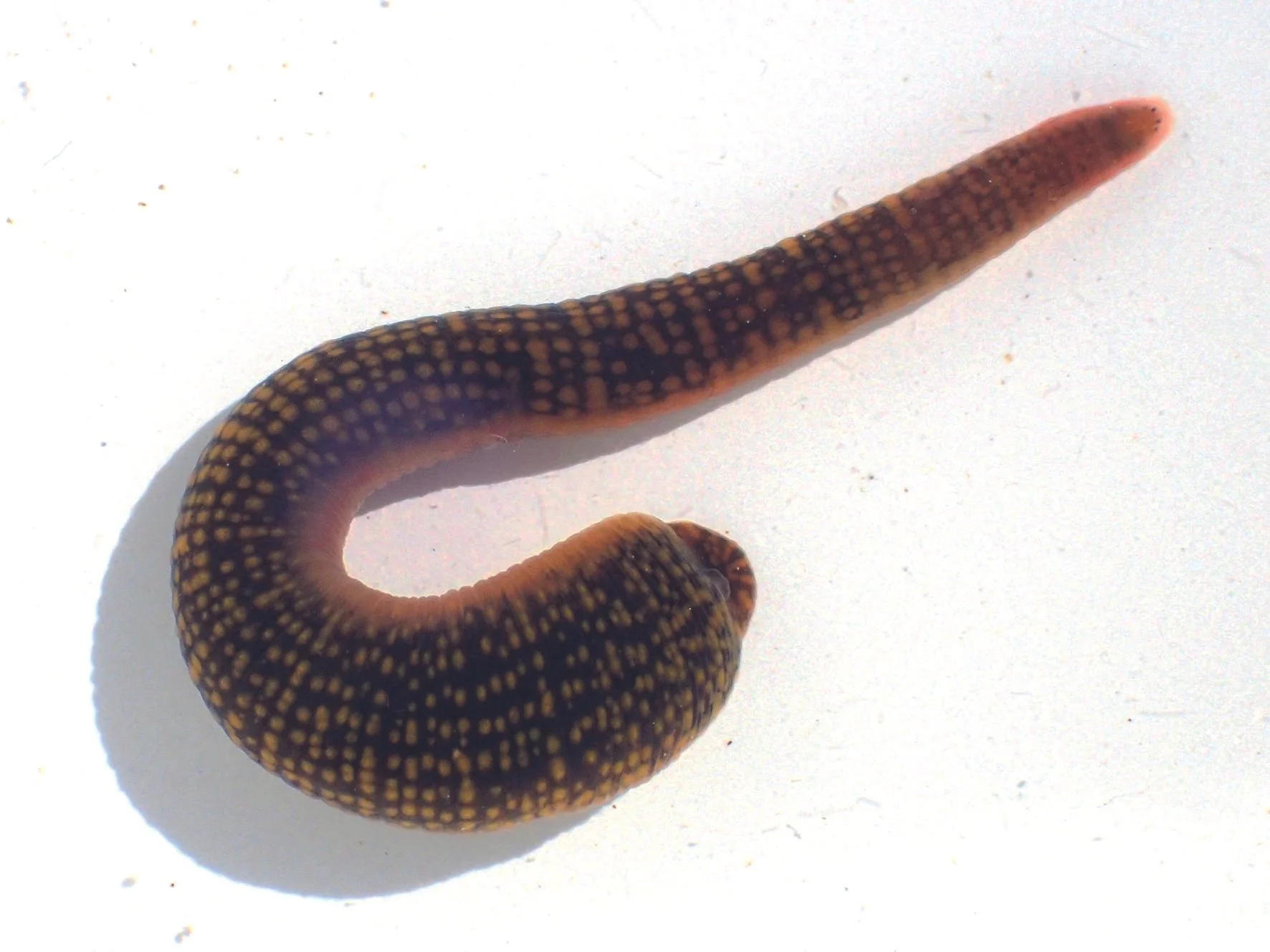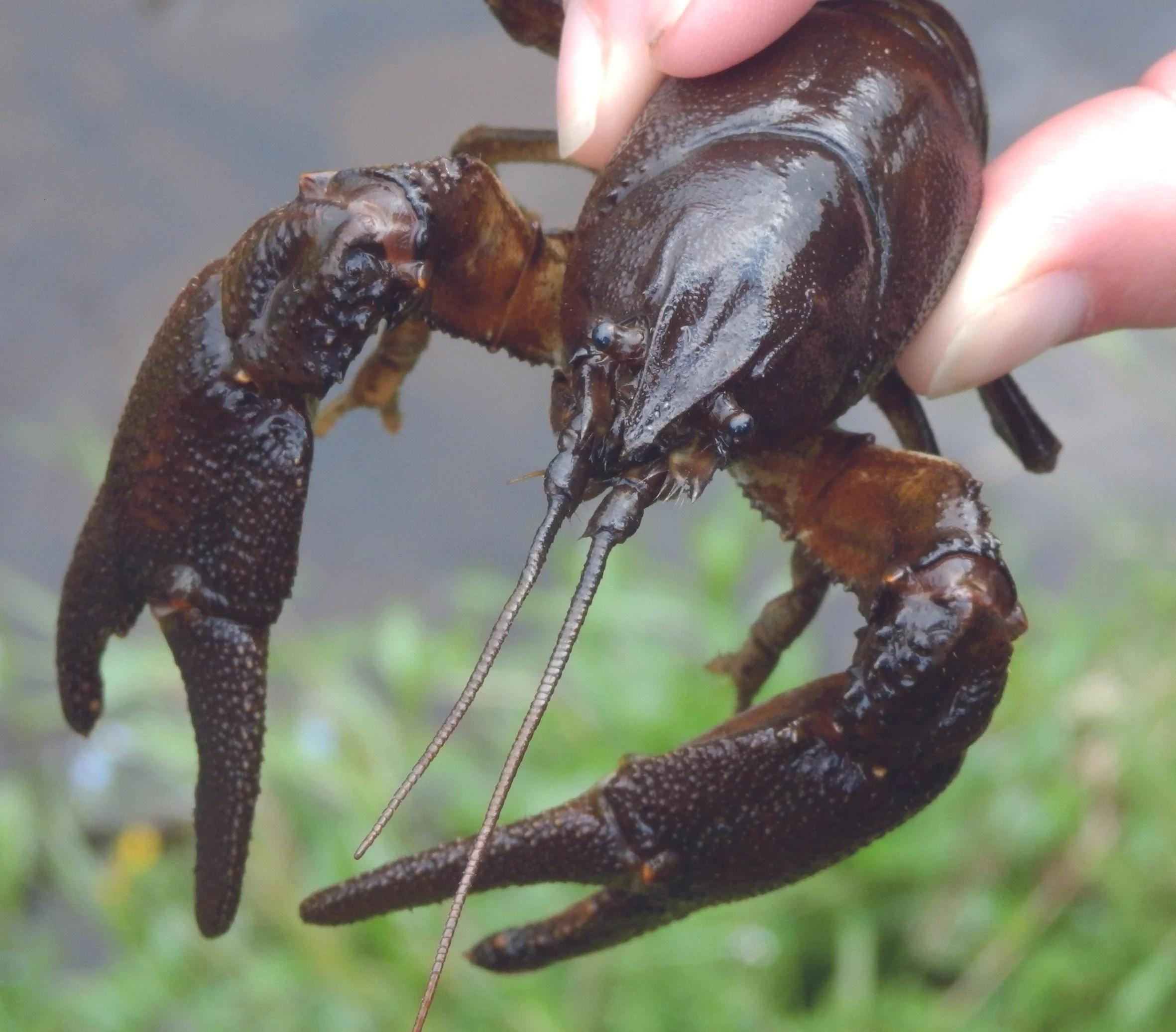
Other River Invertebrates
Although up-wing flies, caddisflies and stoneflies are the three main groups studied in the Riverfly Monitoring Initiative (RMI), freshwater shrimps are also included as a group in the ‘RMI Eight’, and there are various other invertebrates that citizen scientists may see when kick sampling. The Urban Riverfly and Extended Riverfly schemes include more of these invertebrate groups, which can be positive or negative indicators of river health. Find out more about some of these groups below:
Shrimps
Freshwater shrimps (Gammaridae) are one of the RMI Eight groups. They are crustaceans and are found in most waterbodies. However, there are also invasive non-native shrimp species in the UK — killer shrimps and demon shrimps predate and outcompete native species.
Water beetles
Both the adult and larval stages of water beetles may be found in river invertebrate samples. Adults have hardened cases enclosing their wings — they differ from terrestrial beetles in that they do not have an iridescent shine to their cases.
Other insect larvae
Mayflies, stoneflies and caddisflies aren’t the only types of flying insect with aquatic larval stages. Other insect larvae that can be found in freshwater habitats include those of dragonflies, damselflies and blackflies.
Leeches
Leeches are often found stuck to rocks. They have a sucker at each end and move by looping their bodies. Leeches are tolerant to several environmental stressors, so if they make up a large proportion of the invertebrates in a sample, it may indicate poor water quality.
Crayfish
The white-clawed crayfish is native to the UK. It is under threat due to the invasive non-native North American signal crayfish. If you find a crayfish of any species, do not pick it up unless authorised to do so. See the crayfish guidance for Riverfly monitors in England and Wales here.
Molluscs
Freshwater snails, limpets and bivalves are all in the phylum Mollusca. Freshwater snail shells can be a variety of spire or ramshorn shapes, limpets have cone-shaped shells with a curved top, and bivalve shells are made up of two parts connected by a hinge.
Invertebrate photos: copyright John Davy-Bowker, except crayfish: Angus Menzies






